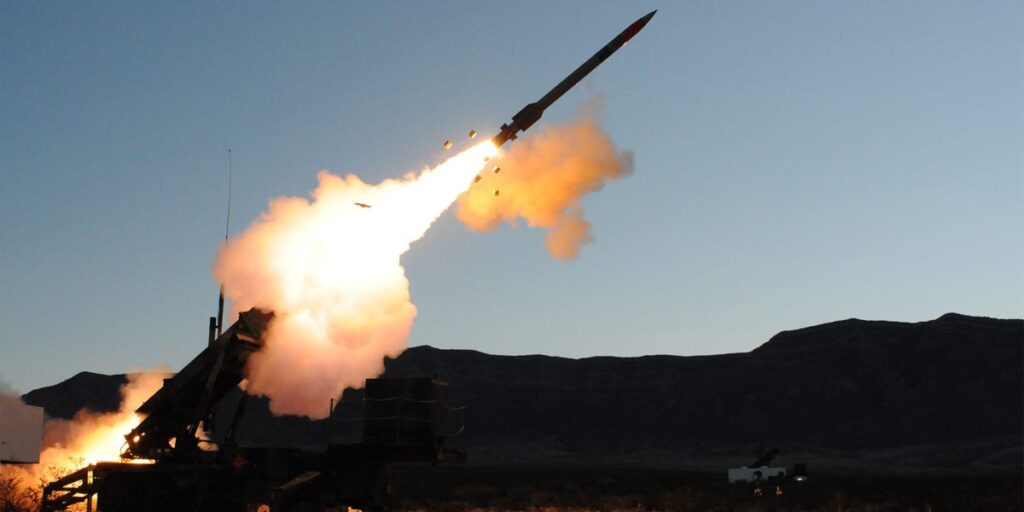
Qatar’s air defense capabilities have once again proven their effectiveness as the nation confirmed that its systems successfully intercepted Iranian missiles targeting the United States’ largest military base in the Middle East. The dramatic event unfolded in the skies above Qatar, a key US ally, showcasing the strength of its defense arsenal.
The incident occurred following Iran’s missile strike against the Al Udeid Air Base in Qatar, a retaliatory action in response to the US military’s bombing of Iran’s nuclear facilities just two days prior. According to a statement from the US Central Command, the coordinated effort between Qatari and US-operated Patriot batteries resulted in the destruction of the incoming ballistic missiles, with no reported casualties among American or Qatari personnel.
Qatar’s Defense Arsenal and Recent Acquisitions
Qatar’s robust defense capabilities are anchored by the US-made MIM-104 Patriot surface-to-air missile systems. Manufactured by defense giants Raytheon, Lockheed Martin, and Boeing, these systems are designed to intercept aircraft at ranges exceeding 70 miles and can also target fast-moving ballistic missiles at shorter distances. Qatar’s acquisition of these systems dates back to 2014, when it became the 13th country to operate Patriots.
In addition to the Patriot systems, Qatar has also invested in National Advanced Surface to Air Missile Systems (NASAMS), developed by the Norwegian defense company Kongsberg Defense and Aerospace, and also produced by Raytheon. These systems are capable of targeting threats up to 20 miles away, including missiles and drones. In 2018, Qatar expanded its NASAMS arsenal with additional missiles and support equipment.
Expanding Capabilities with THAAD
Further bolstering its defense capabilities, Qatar is in the process of acquiring Terminal High Altitude Area Defense (THAAD) systems as part of a broader $42 billion defense deal with the United States. THAAD, developed by Lockheed Martin, is designed to intercept ballistic missiles during their terminal phase at ranges beyond 100 miles, providing an additional layer of security against aerial threats.
Regional Tensions and Military Readiness
The missile interception by Qatar’s defense systems comes amidst heightened tensions in the region. Prior to the attack, US President Donald Trump issued a warning to Iran against retaliating for the US strikes, stating that any response would be met with significant force. Following the missile incident, President Trump described Iran’s actions as a “very weak response,” acknowledging the effectiveness of the US and Qatari countermeasures.
General Dan Caine, chairman of the Joint Chiefs of Staff, noted that US forces in the region had been on high alert over the weekend, prepared to respond to any Iranian retaliation or proxy attacks. The strategic importance of Al Udeid Air Base, which hosts a variety of aircraft including B-52 bombers and C-17 transports, underscores the necessity of maintaining a robust defense posture.
Historical Context and Future Implications
Qatar’s strategic investments in air defense systems reflect a broader trend among Gulf states to enhance their military capabilities in response to regional threats. The acquisition of advanced systems like the Patriot and THAAD underscores the importance of maintaining a technological edge in a volatile geopolitical landscape.
As Qatar continues to strengthen its defense infrastructure, the implications for regional security are significant. The successful interception of Iranian missiles not only demonstrates the effectiveness of Qatar’s defense systems but also highlights the critical role of international partnerships in maintaining stability in the Middle East.
Looking ahead, the ongoing tensions between the US and Iran are likely to influence defense strategies across the region. Qatar’s commitment to enhancing its military capabilities serves as a reminder of the complex security dynamics at play and the importance of preparedness in an unpredictable environment.







